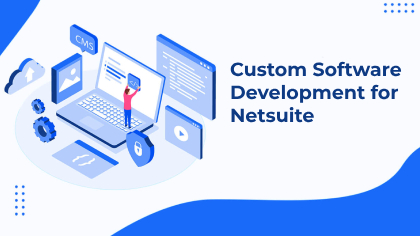One area where efficiency can significantly impact operations is in the Procure-to-Pay (P2P) process. Traditionally a cumbersome and manual process prone to errors and delays, P2P has seen a revolution with the advent of automation technologies. This blog explores the transformative power of Procure-to-Pay automation, its benefits, implementation considerations, and the future trends shaping its evolution.
Understanding Procure-to-Pay (P2P)
Procure-to-Pay refers to the entire process of requisitioning, purchasing, receiving, paying for, and accounting for goods and services in a business. It encompasses multiple steps:
- Requisitioning: Initiation of the procurement process by identifying the need for goods or services.
- Approvals: Obtaining necessary approvals for the purchase, often involving multiple stakeholders.
- Ordering: Creating purchase orders (POs) and sending them to suppliers.
- Receipt: Receiving goods or services and confirming they meet expectations.
- Invoice Processing: Verifying invoices against POs and receipts.
- Payment: Authorizing and making payments to suppliers.
- Reporting and Analysis: Analyzing spend data, supplier performance, and identifying opportunities for cost savings and process improvements.
The Case for Automation in Procure-to-Pay
Historically, the P2P process has been labor-intensive, prone to errors, and lacking visibility. Manual processes involve paper-based forms, email approvals, and manual data entry, leading to inefficiencies such as:
- Errors and Discrepancies: Manual data entry increases the likelihood of errors in purchase orders, invoices, and payments.
- Delays: Paper-based approvals and manual processing result in delays in procurement cycles, impacting operational efficiency.
- Lack of Visibility: Limited visibility into spending patterns and supplier performance makes it challenging to optimize procurement strategies.
Benefits of Procure-to-Pay Automation
- Improved Efficiency: Automation reduces the time and effort required for manual tasks such as data entry, approvals, and invoice processing.
- Cost Savings: Streamlining processes and reducing errors leads to lower processing costs and better utilization of resources.
- Enhanced Accuracy: Automated systems eliminate errors associated with manual data entry, ensuring accuracy in orders, invoices, and payments.
- Faster Cycle Times: Automated workflows speed up procurement cycles, enabling faster response times to market demands.
- Better Compliance: Automation enforces compliance with procurement policies and regulatory requirements, reducing risks associated with non-compliance.
- Improved Visibility: Real-time analytics provide insights into spending patterns, supplier performance, and potential cost-saving opportunities.
Implementing Procure-to-Pay Automation
Successful implementation of P2P automation requires careful planning and execution:
- Assessment: Evaluate current processes, identify pain points, and define goals for automation.
- Vendor Selection: Choose a vendor or solution provider that aligns with your business needs and offers scalability and integration capabilities.
- Customization: Tailor the solution to fit your organization’s unique requirements, including workflows, approval hierarchies, and integration with existing systems.
- Integration: Ensure seamless integration with ERP systems, financial software, and other relevant platforms to maintain data consistency and accuracy.
- Training and Change Management: Provide training to users on the new system and implement change management strategies to ensure adoption and minimize resistance.
- Continuous Improvement: Monitor performance metrics post-implementation, gather feedback, and make iterative improvements to optimize processes further.
Future Trends in Procure-to-Pay Automation
The future of P2P automation is driven by emerging technologies and evolving business needs:
- Artificial Intelligence (AI) and Machine Learning: AI-powered analytics will enable predictive insights into supplier behavior, market trends, and pricing fluctuations.
- Robotic Process Automation (RPA): RPA will automate repetitive tasks such as data entry and invoice processing, freeing up human resources for more strategic activities.
- Supplier Collaboration Platforms: Enhanced collaboration tools will enable closer partnerships between buyers and suppliers, improving communication and efficiency.
- Mobile and Cloud Solutions: Mobile-friendly and cloud-based P2P solutions will facilitate remote work and real-time access to procurement data.
Conclusion
Procure-to-Pay automation is not just a technological advancement but a strategic imperative for businesses looking to enhance efficiency and reduce costs. By automating repetitive tasks, improving accuracy, and providing real-time visibility, organizations can optimize their procurement processes and focus on strategic initiatives that drive value. As technology continues to evolve, embracing P2P automation will be crucial for staying competitive in a rapidly changing global marketplace.
In summary, the journey towards Procure-to-Pay automation represents a transformative shift in how businesses manage their procurement operations. By leveraging technology to streamline processes, businesses can unlock new efficiencies, reduce costs, and gain a competitive edge in today’s dynamic business environment.
STREAMS Solutions excels at assisting its clients in automating procure-to-pay process using a wide range of solutions, including NetSuite ERP, custom applications, integrations and many more. We understand the challenges you may be facing and are committed to finding ways to simplify your procurement process based on your unique environment.






Leave a Reply